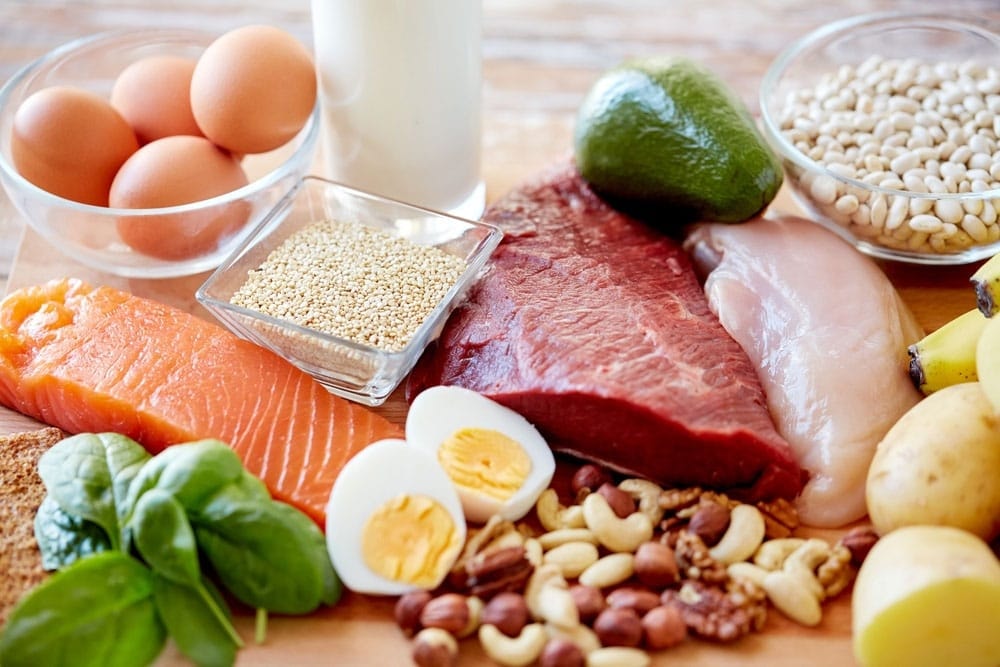Growing muscle after 50 might seem daunting, but it’s far from impossible. This stage of life offers a prime opportunity to redefine your strength and vitality. As the natural aging process leads to muscle loss, known as sarcopenia, the right approach to strength training can turn back the clock and transform your body. Imagine feeling stronger, more resilient, and more energized as you embrace an active lifestyle. This article dives into practical and proven strength training tips tailored specifically for those over 50, showing you how to effectively combat muscle loss, enhance overall health, and enjoy every moment with renewed vigor. Don’t let age define your limits—discover how to reclaim your strength and redefine what’s possible.
Strengthening After 50: Effective Strategies for Building Muscle and Enhancing Health

Gaining muscle after age 50 is a challenge many face, though it’s certainly not impossible. As your body matures, muscle mass naturally begins to decrease, a condition known as sarcopenia, which can be combated with the correct approach to diet and exercise. By focusing on growing muscle after 50, you can adapt your fitness regime to successfully encourage muscle growth and achieve your health goals with an increased understanding of the body’s requirements during this stage of life.
Integrating strength training into your weekly routine is an effective means to stimulate muscle growth. Exercises like push-ups, sit-ups, weightlifting, and resistance training with bands or machines are key components. Not only do these activities build muscle, but they also contribute to bone density, balance, and overall functionality.
Alongside exercise, proper nutrition is critical; a diet rich in protein and other essential nutrients supports muscle repair and growth. Additionally, ensuring safety during workouts and preventing injuries are paramount as the body’s recovery capacity evolves with age.
Key Takeaways
- Incorporate resistance exercises such as weightlifting and resistance band workouts to combat muscle loss and build strength after 50 effectively.
- A diet rich in lean proteins, vitamins, and minerals is crucial for muscle repair and growth. Ensure you consume adequate calories to fuel your workouts and recovery.
- Focus on correct form and technique, warm up before exercising, and cool down afterward to minimize the risk of injury.
- Tailor your exercise routine to include progressive overload, strategic exercise selection, and adequate recovery time to maximize muscle gain.
- Regularly track your workout progress and adjust based on your results and how your body responds to ensure continuous improvement.
Understanding Muscle Growth After 50

As you age, growing muscle after 50 becomes a different challenge than in your earlier years. Recognizing the distinct physiological and hormonal changes is crucial, as is tailoring your nutrition and training approach to adapt to these changes.
Physiological Changes
Your body undergoes several changes after 50 that affect its muscle-building ability. Muscle mass naturally decreases, a process known as sarcopenia, and your body’s reparative processes slow down. This is compounded by a decline in mitochondrial function, reducing energy production in muscle cells.
Hormonal Considerations
Hormone levels, particularly testosterone and human growth hormone, decline with age, impacting muscle growth and strength. This hormonal shift can result in a slower muscle-building process, making adjusting your fitness goals and strategies imperative.
Role of Nutrition
Optimal nutrition plays a vital role in muscle maintenance and growth after 50. Your diet should be rich in lean proteins to aid in muscle repair and synthesis, and consuming an adequate amount of calories is essential to fuel your workouts and recovery. A sufficient intake of vitamins and minerals is also necessary for overall muscle health.
Benefits of Resistance Training
Resistance training is the most effective method for maintaining and building muscle after 50. Incorporating a routine of lifting weights two to three times per week, emphasizing compound movements, can help combat muscle loss and increase strength. Consistency and proper technique are key to seeing benefits from resistance training at this stage of life.
Exercise Principles for Muscle Gain

As you age, growing muscle after 50 requires a tailored approach to exercise. Key training principles that help in muscle gain after age 50 include progressive overload, proper training volume, strategic exercise selection, and adequate recovery time.
Progressive Overload
To encourage muscle growth, you must challenge your muscles by gradually increasing your workouts’ weight, frequency, or intensity. This could mean adding more weight to your lifts or increasing the number of repetitions over time. For example, if you start by lifting 10 pounds for 8 reps, you could aim to lift 12 pounds for the same reps in subsequent workouts.
Training Volume
Your training volume, or the total number of sets and repetitions, plays a critical role in muscle hypertrophy. Aiming for 10 sets per muscle group per week, with 8 to 15 reps per set, is adequate for muscle gain. It’s essential to balance the workout intensity with your capacity to recover.
Exercise Selection
Choose exercises that work multiple muscle groups and joints, known as compound movements, which are more efficient for muscle gain. Squats, deadlifts, and bench presses are fundamental exercises that involve large muscle groups and can elicit a more significant hormonal response conducive to muscle growth.
Recovery and Rest
Rest is crucial for muscle repair and growth. Allocate at least 48 hours of rest before targeting the same muscle group again. During this period, engage in activities that enhance muscle recovery, such as light cardio, stretching, or yoga, and ensure you get sufficient sleep each night.

Did You Know?
Successful bodybuilding strategies for those over 50 involve a combination of resistance and cardiovascular training. A proven strength training routine includes lifting two or three days per week, focusing on compound movements that target multiple muscle groups.
Check out this video for three effective ways to build muscle faster after 50.
By: Live Anabolic
Nutritional Strategies

Adequate nutrition is crucial for growing muscle after 50. Attention to what and when you consume can significantly enhance your strength training results.

Protein Intake
Your muscles require protein to repair and grow. Aim for a high-quality protein intake of about 1.2 to 2.0 grams per kilogram of your body weight daily. Foods like chicken, fish, eggs, and legumes are excellent options. StrengthLog underscores the importance of a high-protein diet for muscle building.
Energy Balance
Maintaining a positive energy balance is essential, so you should consume more calories than you burn. It’s important to focus on protein and include a balanced carbohydrate and fat intake to fuel your workouts and recovery.
Supplementation
Adding supplements can help meet nutrition goals. Consider whey protein, creatine, and omega-3 fatty acids. These can support muscle growth and overall health, especially if your diet lacks certain nutrients. Always choose quality products and consult a healthcare professional before starting any new supplement regimen.
Hydration
Staying well-hydrated is vital for overall health and aids in optimal muscle function. Drink plenty of water throughout the day, not just during workouts. Adequate hydration supports the body’s recovery processes and helps utilize nutrients within your body. Remember to adjust these strategies to your needs and consult with a nutritionist or a medical professional to tailor a plan for you.
Safety and Injury Prevention

When it comes to growing muscle after 50, ensuring safety and preventing injuries are crucial. You’ll need to focus on proper technique, adequate warm-up and cool-down routines, listening to your body’s signals, and obtaining medical clearance when necessary.
Proper Form and Technique
You must use the correct form and technique during exercises to avoid injury and maximize effectiveness. This means you should educate yourself on how each exercise should be performed before attempting it.
You can do this through reputable fitness resources or by consulting with a fitness professional. The guidance provided by Men’s Health suggests that lifting weights and performing body-weight exercises like push-ups should be done with attention to form to build strength safely.
Warm-Up and Cool-Down
Never skip your warm-up or cool-down sessions. Warming up prepares your muscles and joints for exercise by increasing blood flow, which can reduce the risk of injury. A good warm-up might include light cardiovascular exercise and dynamic stretching.
Cooling down helps to lower your heart rate gradually and can include static stretching. Verywell Fit advises beginning with exercises that target large muscle groups to prepare your body for the workout ahead adequately.
Listening to Your Body
Listening to your body is essential in avoiding overexertion and injury. If you feel pain or discomfort beyond the typical muscle soreness associated with a new workout, it’s a sign to stop and rest. Adjust your workout intensity and duration based on how you feel during and after exercise.
Medical Clearance
Getting medical clearance from your healthcare provider before starting any new workout regimen is a particularly important step for individuals over 50. Conditions that may affect your ability to exercise safely, such as heart disease, arthritis, or diabetes, should be considered. This proactive approach, as highlighted by WebMD, is important to ensure that your exercise program is suited to your health status and fitness goals.
Designing a Workout Routine

When planning your workout routine, it’s vital to create a balanced program that aligns with your fitness level and goals. Let’s explore how to structure your routine for growing muscle after 50 effectively.
Frequency of Training
Your training frequency is essential to stimulate muscle growth adequately without overtraining. Aim to train each muscle group two to three times per week, as this frequency allows for proper recovery while providing enough stimulus for muscle growth.
Split Training Versus Full Body
Deciding between split training and full-body workouts comes down to your schedule and preference. Full-body workouts can be efficient if you have limited days to train, working multiple muscle groups each session. Alternatively, split training allows further focus on individual muscle groups but typically requires more days in the gym.
- Full Body Routine: 3 days per week
- Split Routine: 4-6 days per week, targeting different muscle groups each day
Periodization
Periodization involves cycling your training intensity and volume to prevent plateaus and overtraining. Incorporating light, moderate, and heavy training days throughout your weeks and months keeps your muscles challenged and growing.
- Week 1-4: Moderate intensity (12-15 reps)
- Week 5-8: High intensity (8-10 reps)
- Week 9-12: Lower intensity (15-20 reps, focus on form and technique)
Measuring Progress
Tracking your progress keeps you motivated and helps tailor your routine for continual growth. Use a logbook or app to record your workout details, including weights used, sets, reps, and how you felt during the workout. Also, periodically taking body measurements or photos can indicate your progress.
- Record: Sets, reps, weight
- Measure: Monthly body measurements or photos
- Adjust: Routine based on recorded progress and bodily feedback
Lifestyle Considerations

To build muscle effectively after 50, integrating key lifestyle factors such as rest, stress management, and maintaining an active routine is essential for growing muscle after 50. Your habits outside the gym have a significant impact on your muscle development.
Sleep Quality
Prioritize Your Sleep: Adequate sleep is crucial for muscle recovery and growth. Aim for 7-9 hours of sleep per night to ensure your body can repair and build muscle efficiently. Disruptions in sleep patterns can hinder growth hormone production, which is vital for muscle repair and growth.
Stress Management
Manage Stress Levels: High stress can lead to elevated cortisol levels, which may negatively affect muscle growth. Techniques such as meditation, deep breathing, or even a simple leisurely walk can help in managing stress and preserving muscle mass.
Active Lifestyle
- Incorporate Daily Activity: Aside from structured exercise, remain active throughout the day. Activities such as gardening, taking the stairs, or short walks can contribute to a better muscle-building environment by promoting overall health.
- Embrace Variety: Balance your workout routine with both resistance training and cardiovascular exercises. This variation can help in enhancing blood flow, which is important for delivering nutrients to your muscles.
Watch this video for the ultimate guide to building muscle after 50.
By: Fit Father Project – Fitness For Busy Fathers
Transforming Strength: Effective Strategies for Growing Muscle After 50
Growing muscle after 50 may seem daunting, but it’s entirely achievable with the right approach. As sarcopenia naturally leads to muscle loss with age, embracing strength training can effectively counteract this process and enhance overall health. Individuals can build and maintain muscle mass by integrating practical resistance exercises, focusing on nutrition, and prioritizing recovery. This proactive approach transforms the body and boosts overall vitality and well-being.

Embarking on this fitness journey is more than just a physical challenge—it’s an opportunity to redefine personal limits and embrace a healthier lifestyle. Individuals over 50 can reclaim their strength and enjoy renewed energy with tailored fitness routines and mindful lifestyle adjustments. This commitment to muscle growth and overall health demonstrates that age is not a barrier but a new beginning for achieving personal wellness goals.
Frequently Asked Questions
What Dietary Changes Are Recommended to Support Muscle Growth in Individuals Over 50?
To support muscle growth, increase your protein intake with lean meats, fish, and plant-based proteins. Adjusting your diet to include nutrient-dense foods that cater to an older metabolism is key to muscle maintenance and growth.
Can Men and Women Over 50 Still Effectively Gain Muscle, and What Are the Best Practices?
Yes, both men and women over 50 can effectively gain muscle. Best practices include strength training focusing on progressive overload, consistency, and recovery time to allow for muscle repair and growth.
What Are the Most Effective Leg Exercises for Enhancing Muscle Mass in the Over 50 Age Group?
Practical leg exercises that enhance muscle mass include squats, deadlifts, leg presses, and lunges. These exercises help to build a strong foundation, targeting the quadriceps, hamstrings, and calves.
What Role Do Supplements Play in Muscle Development for People After 60, and Are They Necessary?
While supplements can support muscle development, they are not a substitute for a balanced diet. Protein supplements may be beneficial if dietary protein requirements are unmet, especially for those over 60.
How Should Someone Over 50 Structure Their Weightlifting Routine to Maintain Muscle Mass?
Your weightlifting routine should involve full-body workouts with a mix of compound and isolation exercises two to three times per week. Ensure to allow adequate rest between sessions to promote muscle recovery and growth.
Stay Vibrant and Thriving: Join the Fit After 55 Community!
Discover your fitness motivation at Fit After 55!
Visit our website (https://www.vitalityseniorliving.com/resources_for_senior/staying-fit-at-55/) for engaging content, expert advice, and reviews tailored for seniors. Connect with our supportive community on Facebook (https://www.facebook.com/fitafter50dotcom/) and meet others dedicated to maintaining an active and healthy lifestyle.
Let’s embark on this fitness journey together—because age is just a number!

